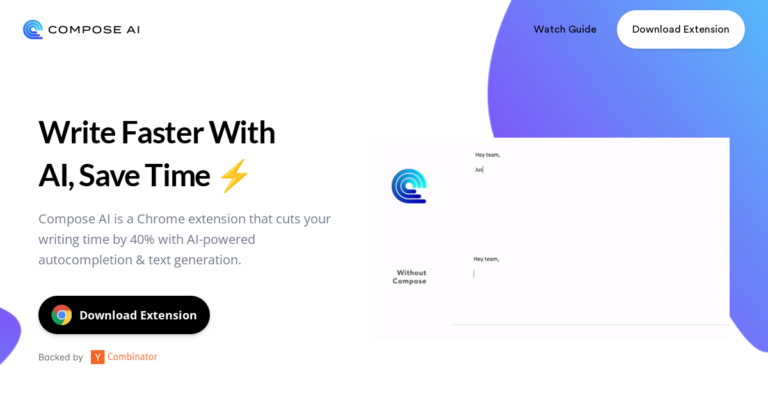Revolutionizing Business Operations: Top AI Tools for Streamlining Processes
Summary:
Artificial Intelligence (AI) has become an essential tool for businesses seeking to streamline their operations. With AI tools, companies can automate repetitive tasks, improve decision-making processes, and enhance customer experiences. In this article, we will discuss the top AI tools available for streamlining business processes and provide useful resources for further reading.
Table of Contents:
1. Introduction
2. Body
a. Chatbots
b. Robotic Process Automation (RPA)
c. Predictive Analytics
d. Natural Language Processing (NLP)
e. Machine Learning (ML)
3. Recap
4. Conclusion
Introduction:
The use of AI in business operations has become increasingly popular in recent years. AI can help companies automate tasks, reduce errors, and improve customer experiences. In this article, we will discuss the top AI tools for streamlining business operations.
Body:
a. Chatbots
Chatbots are AI-powered virtual assistants that can communicate with customers in natural language. They can provide customers with useful information, resolve common issues, and even process orders. Chatbots can be integrated with different messaging platforms, including Facebook Messenger, WhatsApp, and Slack. They can also work with voice assistants like Amazon Alexa and Google Assistant.
One of the most significant advantages of chatbots is that they can work 24/7, providing customers with assistance at any time. They can also handle multiple requests simultaneously, reducing customer wait times.
Resources:
– “How Chatbots Are Revolutionizing Customer Service” by Forbes
– “10 Best Chatbot Platforms to Build Your Own Chatbot” by HubSpot
b. Robotic Process Automation (RPA)
RPA is a technology that allows businesses to automate repetitive tasks, such as data entry, invoice processing, and report generation. RPA bots can perform these tasks faster and more accurately than humans, freeing up employees to focus on more complex tasks.
RPA bots can be trained to perform specific tasks, and they can work with different systems and applications. They can also be programmed to work according to specific rules, ensuring compliance with regulations and policies.
Resources:
– “What is Robotic Process Automation (RPA)?” by UiPath
– “The Benefits of RPA: 7 Reasons to Automate Your Business Processes” by Forbes
c. Predictive Analytics
Predictive analytics involves using data, statistical algorithms, and machine learning techniques to identify the likelihood of future outcomes based on historical data. Predictive analytics can be used in different areas, including marketing, finance, and operations.
By analyzing historical data, businesses can identify patterns and trends that can help them make better decisions. They can also predict future outcomes, allowing them to make proactive decisions.
Resources:
– “Predictive Analytics: What It Is and Why It Matters” by Salesforce
– “10 Examples of Predictive Analytics in Business” by Emerj
d. Natural Language Processing (NLP)
NLP is a subfield of AI that involves analyzing and understanding human language. NLP can be used in different applications, including chatbots, voice assistants, and sentiment analysis.
NLP tools can analyze text and speech, identifying keywords, sentiment, and even emotions. They can also understand the context of the message, allowing them to provide more accurate responses.
Resources:
– “Natural Language Processing (NLP): What It Is and Why It Matters” by IBM
– “10 Applications of Natural Language Processing (NLP)” by Lionbridge
e. Machine Learning (ML)
Machine learning involves training algorithms to make predictions or decisions based on data. ML can be used in different applications, including fraud detection, recommendation systems, and image recognition.
ML algorithms can learn from data, improving their accuracy over time. They can also identify patterns and trends that are not visible to humans, allowing businesses to make more informed decisions.
Resources:
– “What is Machine Learning?” by Google
– “10 Examples of Machine Learning in Business” by Emerj
Recap:
AI tools can help businesses streamline their operations, reduce costs, and improve customer experiences. Chatbots can provide customers with 24/7 assistance, while RPA can automate repetitive tasks. Predictive analytics can help businesses make better decisions, NLP can analyze human language, and ML can identify patterns and trends.
Conclusion:
AI is transforming the way businesses operate, and the tools discussed in this article are just the beginning. As AI continues to evolve, businesses will have even more opportunities to improve their operations and enhance customer experiences. By embracing AI, businesses can stay ahead of the competition and achieve long-term success.
#Revolutionizing #Business #Operations #Top #Tools #Streamlining #Processes


